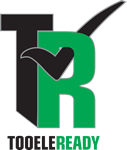What Organizations Can Do
Prepare Now
 Involve your staff
Involve your staff- Train staff and others about how to respond to emergencies and the procedures that need to take place when something happens. Instill a Preparedness mindset within your organization.
- Be involved within the community and be known for being proactive in preparing for community emergencies and responses
- Have pre-assigned roles, but be flexible as situations present
- Work to get your staff (as well as clients, family, and community members) psychological first aid
- Build your partnerships and networks now
- Participate in city/county Emergency Preparedness meetings and drills
- Look for opportunities to infuse your plans into the community response and recovery plan
- Prepare and get signed Memorandums of Understanding (MOU) and Mutual Aid Agreements (MAA) on file
- Have a Business Continuity Plan in place
- When disaster strikes be sure a representative from your organization communicates with the Emergency Operations Center (EOC)
 Keep a variety of communication devices charged and ready and train staff on their use
Keep a variety of communication devices charged and ready and train staff on their use- Insure that staff carry their work identification and proof of professional licensure
- Pre-assign a credential verification process for volunteers utilized during activation of your organization
- Communicate all public information through the Public Information Officer (PIO) at the emergency operation center (EOC) and through a single representative for your organization
- Have a dedicated person(s) as the recorder of events to transcribe and take pictures as part of the response and recovery event documentation
- Document the use (and purchase) of supplies consumed in responding to disaster or emergency
- Keep manual forms available to anticipate the lack of computer access
- Utilize call rosters & keep printed copies available. Keep important numbers of contacts of leadership and others partners in cell phone
- Have someone track all associated expenses
- Track donated inventory with a “quick” log – for accounting, but more importantly to assist in sending a THANK YOU later
- Let others know what you need
During Recovery
Faith-based organizations, groups and individuals are often the lifeblood of the community and the recovery efforts. Connecting with and, cooperating with, and following on social media with as many government agencies and entities as were available helps to keep the organization informed, but should not be relied on without actual confirmation from said agencies and partners.
Work with local Emergency Management or Government to host information about help your organization can provide on their Disaster information page or social media account. With one source that is dedicated to the disaster, not only is it easier to find, but it is also unbiased and gains user trust. This should be managed by someone that has no other purpose. No other sources for this exist, as media outlets are commercial, and all other groups are heavily tasked during this time.

